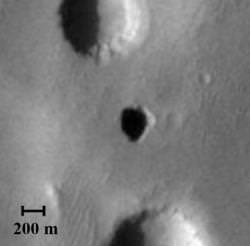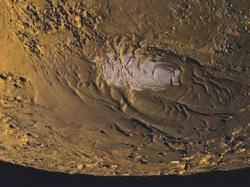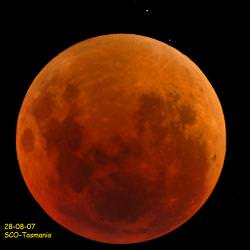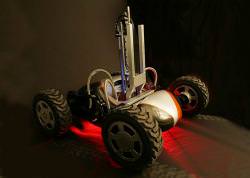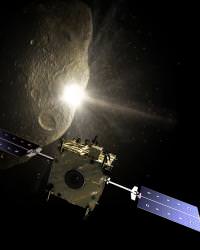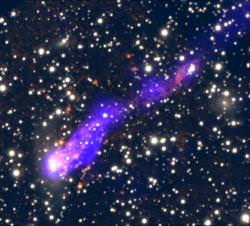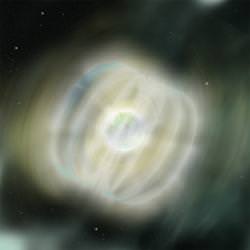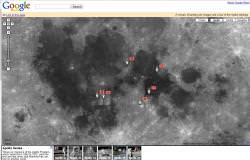More Mars news… NASA’s Mars Odyssey spacecraft has turned up what look like the entrances to caves along the slope of a Martian volcano. If these turn out to be actual tunnels or caves, they could be a scientific goldmine, offering future explorers protection and a unique region to study – perhaps even life could be hiding away from hostile Martian surface environment.
The seven possible cave entrances are dark, and nearly circular, ranging in size from 100 to 250 metres (328 to 820 feet) across. They were discovered by NASA’s Mars Odyssey and Mars Global Surveyor spacecraft. Follow up observations with Odyssey’s infrared cameras confirmed that they could very well be cavernous entrances into underground regions on Mars.
The infrared evidence showed that the temperatures inside the holes changed less than the surrounding regions. “They are cooler than the surrounding surface in the day and warmer at night,” said Glen Cushing of the U.S. Geological Survey’s Astrogeology Team and of Northern Arizona University, Flagstaff, Ariz. “Their thermal behavior is not as steady as large caves on Earth that often maintain a fairly constant temperature, but it is consistent with these being deep holes in the ground.”
One of the downsides of these caves is their altitude. They’re located near the top of a massive Martian volcano called Arsia Mons. At this high altitude, life would have a difficult time coping with the extreme cold and lower air pressure.
Planetary geologists think the caves might have been formed by underground stresses around the volcano. The caves are inline with with other bowl-shaped pits that appear to have been formed when material collapsed. There could be long networks of tunnels and stress fractures. In some cases, the roof just collapsed in completely, and in other places, you might get a cave entrance instead.
The next step is to bring the much more powerful Mars Reconnaissance Orbiter’s camera in to image the regions better. It might be able to shed some light on the mystery.
Original Source: NASA/JPL News Release

